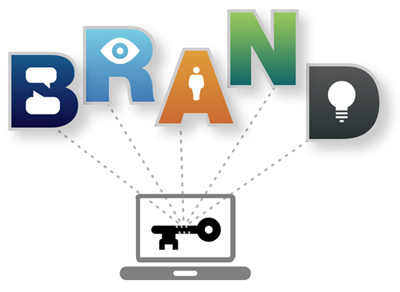This is the Era of Brand (Loyalty)

I think we are in fact in the era of “brand,” not necessarily “brands,” since there are other eras of brands, as viewers of Mad Men might attest.
Maybe more accurate is that we are in the era of brand loyalty.
Brand loyalty is generally a B2C term suggesting the establishment of brand preference. Today’s B2C brands often start with an idea, some kind of competitive differentiator, and often spend less time formally market testing, but rather, quickly assemble a website, and Facebook, Twitter and LinkedIn presence, and proceed to make incremental improvements based on real time feedback from customers and others. From this real time digital dialogue, if handled with care, brand loyalty grows.
B2B firms generally deal with specific audiences, often technical, and generally build their businesses thus brands from word-of-mouth recommendation. Because they are historically relationship-based they often tend to be skeptical about what a website, internet marketing or social media can do for them.
What B2B businesses have been missing in their perception and practice of brand building, is that power of brand loyalty, which drives B2C brands. Today, it is not enough to just develop a brand voice through repositioning and execute a solid website as many B2B brands settle for, which is a recipe for brand stagnation. Unlike in the past, many customers want to have more interaction with their favorite companies and brands both online and offline.
Simply put, in order to utilize and promote your messaging to its fullest, you ultimately want the trifecta for a successful brand; ending in enhanced brand loyalty.

Brand loyalty comes from openly and consistently projecting your voice in an online dialogue with customers and others using available and ubiquitous vehicles like Facebook, Twitter, LinkedIn, etc. This is not new, but it is fast becoming unavoidable for B2B companies that have thus far avoided it under the assumption that personal relationships are all that is needed.
B2B company leaders are generally in their 30s and 40s, and are quite comfortable living in the digital space. In fact, many of today’s executives expect an active digital dialogue with those they are considering doing business with.
The increased expectation of brand accessibility provides companies with both an opportunity and an obligation to be more engaged. For relatively little effort, a brand that is not engaging customers online can get up to speed and turn a well-positioned yet quiet “relationship” company brand into an engaged organization that reaches out to customers in a daily dialogue that will result in better products and services and a bigger brand persona.
We will discuss how to build brand loyalty for B2B companies in upcoming posts. Stay tuned!
